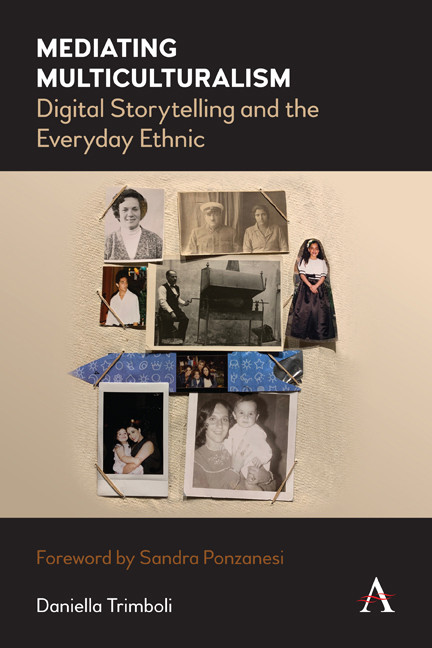Chapter Six - In Pursuit of the Promise
Published online by Cambridge University Press: 21 August 2020
Summary
‘I didn't think it would turn out this way’ is the secret epitaph of intimacy.
– Berlant (1998, p. 281)How does will become a wall?
– Ahmed (2012a, p. 10)The stage of ethnicity has been shown to be normatively predetermined in digital stories about cultural diversity. In this chapter, I consider how this stage is also affectively set, albeit always in relation to and embroiled with normative categories. Affect theory allows the analysis of the performative to be extended, helping to highlight the nuances of the digital story performance that might otherwise be overlooked. Adopting a ‘micropolitics of the subliminal’ (Thrift 2004, p. 71), I analyse how the racialised discourse of whiteness is influenced and conditioned by affect and manifests itself within the digital storytelling genre. In doing so, I add to the work carried out by Smaill, who highlights the importance of exploring the affective levels of non-fiction film. In The Documentary: Politics, Emotion, Culture (2010), Smaill emphasises the ways in which emotion fuses itself to the social agenda of the documentary, positioning and addressing the film's subjects and its audience. Understanding these forms of address involves taking notice of the patterning of stories and their sequential revelations, which ‘figure and refigure’ lifeworlds (Feld 1998, p. 446). It also means utilising a dynamic definition of affect, which, departing somewhat from Smaill (2010), considers affect as structures of energy that circulate in the non-discursive field, including – but not limited to – emotions. Grossberg (1987, p. 41) terms these structures ‘affective economies’.
This chapter examines how affective economies operate according to whiteness in ACMI's migrant digital stories and Big hART's digital project JT and are ultimately deployed via the performative. I also introduce two new case studies co-produced by ACMI: Kenan Besiroglu's Yeni Hayat = New Life (YHNL, 2007) and Rita el-Khoury's Where Do I Belong? (WDIB?, 2007). The analysis expands ‘the envelope of what we call the political’ beyond the discursive or representational elements that are more readily recognisable in these texts (Spinks 2001, p. 23; Thrift 2004, p. 64). As such, it also works towards Svetlana Boym's (1998) and Antwi et al.'s (2013) goal – to map diasporic or postcolonial intimacies, that is, those intimacies that are created through the complex processes of migration.
- Type
- Chapter
- Information
- Mediating MulticulturalismDigital Storytelling and the Everyday Ethnic, pp. 113 - 130Publisher: Anthem PressPrint publication year: 2020



